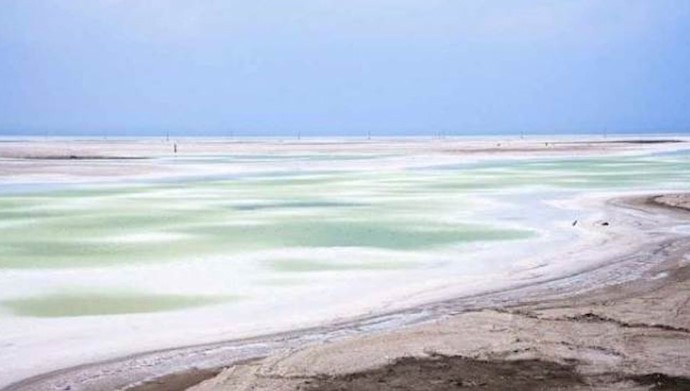Analysis by PMOI/MEK
Iran, Nov. 8, 2018 – Qom’s Namak Lake, a salt lake in the Iranian province of Qom, is gradually approaching its demise. Its dire consequences for the environment can already be felt in the environment of Qom’s neighboring provinces.
Namak Lake is located 40 kilometers north of Qom district, 85 kilometers south of Tehran. The lake which is also known as “Saveh-Qom Lake” or “Shahi Lake” spreads over a 240-kilometer area and is connected to Semnan, Tehran, Qom, and Markazi provinces. Namak Lake is also called the greatest natural mirror of Iran because of the large salt crystals that cover huge parts of it.
In the past, Karaj, Jajrud, Shur, Qamrud, and Qarechay rivers supplied Namak Lake with water keeping it alive. But nowadays, the salt lake has become one of the center points of dust storms.
According to Iranian officials, Namak Lake’s dry out will lead to an environmental disaster with more catastrophic consequences than those of Lake Urmia, another famous salt lake in Iran. The dust and haze that arises from a dried-out Namak Lake will impact approximately one quarter of Iran’s population.
When Namak Lake started to dry out and the environment started to change for the worse, local farmers began to leave the area and this process has continued until today.
On April 22, Salamat News website published a report titled “Count down until Namak Lake’s complete dry out” writing: “The dry-out crisis of Qom’s Namak Lake, which started half a century ago, accelerated with the 2003 drought, and lead to a complete evacuation of most villages lying between this lake and ‘Hoz Soltan.’”
According to Taadol newspaper, August 6, the technical deputy of the environment protection organization of Qom province acknowledges that, “If the water rights are not allocated properly and existing water resources are used excessively, 200 thousand hectares of salty area of the Namak Lake will transform Qom to another Khuzestan through widespread dust emission.” Khuzestan is a province in southern Iran with notoriously catastrophic sand and dust storms.
On July 28, Hamshahri website published an article about Qom’s Namak Lake situation and its impact on the lives of the local population.
“Nowadays, villages close to this area have become ghost towns in a 50-kilometer radius because of the drought. About 30 to 40 percent of farming lands near this area have also become unusable because the dry lake has made the water of nearby water wells salty,” Hamshahri writes.
Earlier, Jabbar Kuchakinejad, a member of the Iranian parliament, had warned about “salty rain due to the dry out of Qom’s Namak Lake.”
In an interview with Iranian parliament’s news agency he warned the department of environment and asked them to prevent the situation of Namak Lake from becoming a crisis.
“Lakes which contain salt, if they dry out, their remaining salt will pollute the environment like dust,” he added.
The main reason behind the Iranian salty lake crisis is a series of uneducated activities by state institutions and a lack of water rights for the lakes. The water rights are being stolen by the political elite to fill their deep pockets.
On May 10, Young Journalists Club, close to Iran’s paramilitary Basij, quoted the technical deputy of Qom province’s environment department saying that building two dams called “Alqadir” and “15 Khordad” in the “Moseyle” plains has destroyed the vegetation, salted the soil and created an environment crisis in the area.





